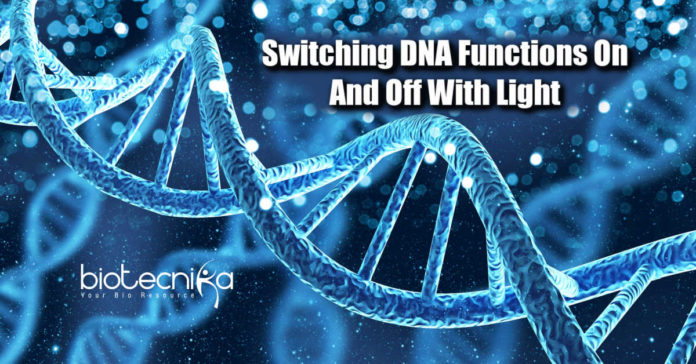Scientists use light to switch DNA functions on and off
DNA is the basis of life on earth, stores all the hereditary information an organism requires to develop, function, and replicate. It is essentially a biological instruction handbook present in every cell. An approach for managing the biological roles of DNA with the help of light has been revealed by scientists at the University of Münster. This method helps scientists to fully know and regulate the processes that occur in the cell – e.g., epigenetics. The study outcomes have been released in the journal Angewandte Chemie.
Enzymes are the main factor for proper cell functions. Enzymes are proteins that carry out chemical reactions inside the cell. They aid in the breakdown of specific molecules, synthesizing metabolic products, transform energy for the cell’s functions, modify DNA epigenetically, and produce copies of the DNA molecules. A group led by Professor Andrea Rentmeister, Institute of Biochemistry, University of Münster, used an enzymatic cascade reaction to understand and monitor these features much better. This series of succeeding reaction steps, including various enzymes, makes it feasible to transfer photoaging groups – chemical groups that can be removed using irradiation with light – to DNA. Earlier, research studies had revealed that only small residues (small adjustments like methyl groups) could be moved precisely to DNA, RNA, or proteins.
Nils Klöcker, lead author and a Ph.D. student, stated that with this study, it is now feasible to transfer larger residues or modifications like the photocaging groups. The basis for the modified activity was explained at a molecular level with the help of Professor Daniel Kümmel, a structural biologist working at the Institute of Biochemistry.
The scientists engineered an enzyme in the cascade using a Nobel prize-winning method – protein engineering, making it feasible to switch DNA functions on and off employing light. It was feasible to increase the substratum spectrum of enzymes – in this instance, methionine adenosyltransferases, using protein design. The scientists analyzed 2 methionine adenosyltransferases. The changes carried out provides an opening factor for developing other methionine adenosyltransferases with an expanded substrate spectrum. Andrea Rentmeister said that incorporating these methionine adenosyltransferases with other enzymes has the capacity for future cellular uses. This is a crucial measure for executing in-situ generated, non-natural materials for other enzymes in epigenetic research.






